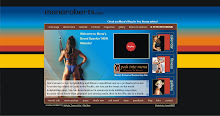I started bodybuilding in September 1984. At that time, I barely weighed 90 lbs. I learned to change my diet so I could put on muscle weight and be leaner. A bodybuilder’s diet is not a realistic diet though. It is too restrictive at contest time and allows for an overabundance of protein in the off season too. The extreme dieting for a competition is not healthy in the long run. Many former bodybuilders who don’t eat a clean diet all year round eventually become fat former bodybuilders. I see it all the time. For that reason, I often caution men and women who decide to compete in bodybuilding and fitness events about the dangers of extreme dieting required for the sport. I recommend that they compete to experience the wonderful sport fitness has become but warn them that there is a life after competition. The extreme dieting can cause a person to binge eat afterwards and develop new fat cells. Over time their ability to store fat increases. This is not a good thing.
Dieting is a word I don’t use and don’t believe in. However, the media still touts dieting as the only way to lose weight. (Informercials are notorious for this type of hype). A diet is made up of food groups that are good or bad for you. Most are fads that are extremely popular then fade away. The Atkins Diet though, has been around for a long time. Its appeal is quick weight loss. However, the weight is mostly from water and muscle. The excess protein and fat recommended by the Atkins diet can cause a heart attack and other dangerous health problems. Other fads are the detox diets. This is a form of liquid diet that uses raw food and advocates the cleansing of toxins from the body. It is so restrictive and can cause renal failure. It is dangerous. Nature detoxes us daily with a wonderful natural substance called fiber found naturally in fresh fruit, vegetables and whole grain products.
The eating style, not diet, that I can recommend is the South Beach Diet. Dr. Agatston, its founder, is a famous cardiologist in South Florida. He writes a health column for Prevention Magazine. He recounted in an interview that his diet book was an accident. He said that his heart patients wanted some kind of eating plan so he started giving them recipes and guidelines. He then started putting these in book form and it became a hit. Millions of copies are sold yearly. His guidelines and advice are sound. I recommend his recipes and philosophy about weight loss even though I don’t want anyone to diet. Please go to http://www.southbeachdiet.com/sbd/publicsite/about-dr-agatston.aspx for more information.
Weight watchers is another eating style that I recommend. http://www.weightwatchers.com/plan/apr/index.aspx.They advocate making healthy choices, staying fuller longer,cutting back on calories and group support. I’ve watched their success over the years and find their philosophies are very close to the same ones I teach in The Mona Roberts Exercise Camp on Guam. My camps are taught in groups that meet and have 30 minute lectures on lifestyle changes and nutrition followed by a walk or walk/jog and an abdominal and lower back strengthening routine. We start weight training in the third week. Students are required to submit daily diaries of their eating and exercise habits. This allows for accountability and for me to monitor their progress and give advice in a timely manner. I also have my students over to my home for a low-fat cooking class where I show them how to modify the most common dishes. This interactive time is crucial to one’s success in the long run.
To start a weight loss or weight management program you should keep a daily journal of your eating and try to eat 4-5 smaller meals a day. Write down your thoughts and feelings in the journal as well. This will help you get rid of some of the stress that may come with lifestyle changes. Writing in a journal is a way of letting go, of expressing oneself without being judged. At the end of each week, read through the journal looking for red flags like fried food, skipped meals, too much alcohol or soda and/or not eating throughout the day. It may be overwhelming but it’s a start. You won’t be perfect at this but you will improve slowly. Just having more energy or being in a good mood are signs that you’re eating better. When you skip meals you become lethargic and grumpy. Hang in there, it can be done. Remember, you have the rest of your life to fine tune this routine right? Good luck. Feel free to email me if you should have any questions.
.jpg)

.jpg)



